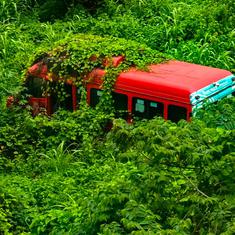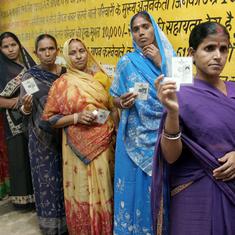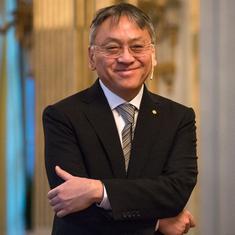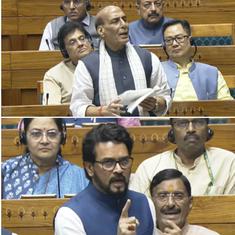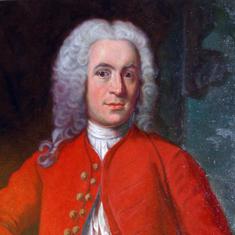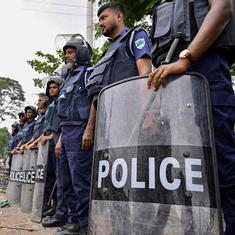On April 30, as Buddhists around the world celebrated Vesak or Buddha Purnima – a day that commemorates the birth, enlightenment and death of the Buddha – Islamabad mayor Anser Aziz joined the ambassador of Nepal Sewa Lamsal Adhikari for a march to mark the occasion in a public park in Islamabad. This is not the first time Vesak has received official patronage in Pakistan. The first state celebration of the sacred Buddhist day happened two years ago when a 43-member delegation from Sri Lanka comprising ministers, monks, religious scholars and media representatives was invited to Pakistan. Speaking to mediapersons at Monday’s march, Aziz vowed to preserve holy Buddhist sites in the capital.
On the foothills of the Margalla Hills, Islamabad is located in the heart of what was once known as the Gandhara Civilisation. In the outskirts of the city lies Shah Allah Ditta, a historical village with ancient caves that were once used by Buddhist monks, Hindu ascetics and Muslim fakirs. The village lies on the historical road that connected Punjab with Taxila and then Kabul – the Grand Trunk Road of Sher Shah Suri.
The real Buddhist treasure lies across the mountain, in Taxila. Scattered around the city are several archaeological sites, mostly associated with Buddhism. The Dharmarajika Stupa lies not far from Taxila Museum. It was constructed in the 2nd century CE during the Kushan dynasty to house the relics of the Buddha. There are some who suggest the original structure was raised by King Ashoka in the 3rd century BCE and that the current stupa was constructed over that. Further west, in the district of Haripur, perched on top of a hill, are the remains of the Jaulian monastery, believed by some to be the oldest “university” in the world. In the middle of these two sites are the ruins of the ancient city of Sirkap. The name of the city, Sir (head) and kap (cut), is believed to be derived from a Buddhist legend in which the Buddha, in one of his previous incarnations as King Chandraprabha, cut off his head. Some legends suggest the name Margalla – Mar (cut) and galla (neck) – also comes from the same tale.
Moving further west into Khyber-Pakhtunkhwa and Afghanistan, the remains of the Gandhara Civilisation have survived thousands of years. However, there are some that have not been as lucky. In 2001, the Buddhas of Bamiyan were destroyed by the Taliban regime. The destruction was justified in the name of iconoclasm.

Similarly, a 7th century Buddha sculpture in Swat was defaced by the Taliban in 2007 when they managed to gain control of the region.
This defaced sculpture of Buddha became a symbol of the changing national narrative when it was renovated by Italian archaeologists in 2016. This was a new state that understood the importance of soft power. This was also the year the Pakistani state celebrated Vesak for the first time. After Sikh pilgrimage diplomacy, under which several historical gurdwaras around the country were renovated and Sikh pilgrims from around the world encouraged to visit these shrines, it seemed as if the state was now targeting Buddhist pilgrimage diplomacy. Relics of the Buddha were sent to Sri Lanka for Vesak while pilgrims from Buddhist-dominant countries were encouraged to visit Pakistan, particularly Taxila, the most spectacular testimony of Buddhist heritage in the country.

What of Hindu heritage?
But while a particular historical past of the region was being promoted, another – equally important – was being ignored. Taxila is of paramount significance in the region’s ancient Buddhist history, but it is just as important to its ancient Hindu culture. It is where Chankaya wrote his famous Arthashastra and first discoursed with a young Chandra Gupta Maurya, helping him lay the foundation of the Mauryan Empire in the 4th century BCE. Panini, believed to be one of the earliest linguists and grammarians of the world, laid the foundation of classical Sanskrit in Taxila sometime around the 5th century BCE. Charaka, one of the most important contributors to ayurveda, is also believed to have studied in Taxila. And legend goes that Vaishampayana narrated the Mahabharata for the first time in Taxila. The city is also mentioned in the Ramayana and is stated to have been founded by Bharata, the younger brother of Ram.
So why is it that while Taxila’s Buddhist heritage is being promoted passionately, its Hindu heritage is being completely sidelined? Many cite the Pakistani state’s discomfort with its non-Muslim past as the reason. Islam, it is argued, is an iconoclastic religion. Hence, for a religious state, it is unimaginable to promote the heritage of a religion expressed through icons. However, in that case, similar treatment should have been meted out to its Buddhist heritage. If the state was not interested in promoting its non-Muslim heritage, then gurdwaras around the country would have not been renovated and handed over to the local community. The treatment seems to be peculiar to Hindu heritage, a product of the country’s political origin and its antagonistic relationship with a “Hindu” India. Contemporary political categories are being imposed on Pakistan’s ancient culture. Thus, whereas Buddhist and Sikh heritage have become acceptable, Hindu heritage remains a bone of contention.
There are, however, signs of change. In November, the Supreme Court of Pakistan took suo moto notice of the drying of the sacred pond at Katas Raj, an ancient Hindu temple a little over an hour from Islamabad.

In March 2016, Holi and Diwali, along with Easter, were declared national holidays. But there is still a long way to go before Pakistan’s Hindu heritage is celebrated with the same zest as its Buddhist and Sikh history. Ram Navami went unnoticed in March, but there is still Krishna Janmashtami in September.
Haroon Khalid is the author of three books – Walking with Nanak, In Search of Shiva, and A White Trail
